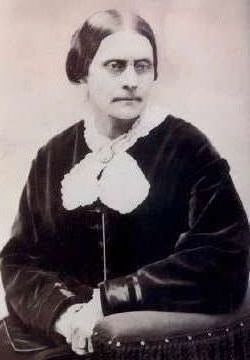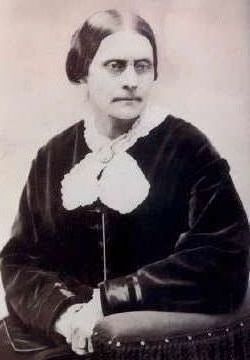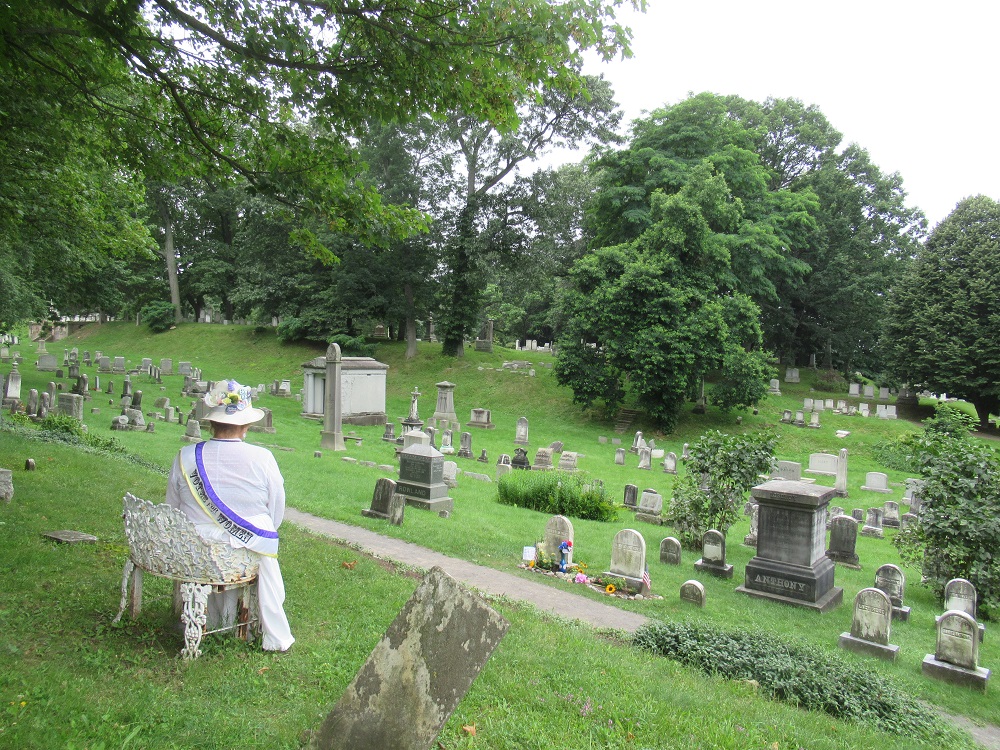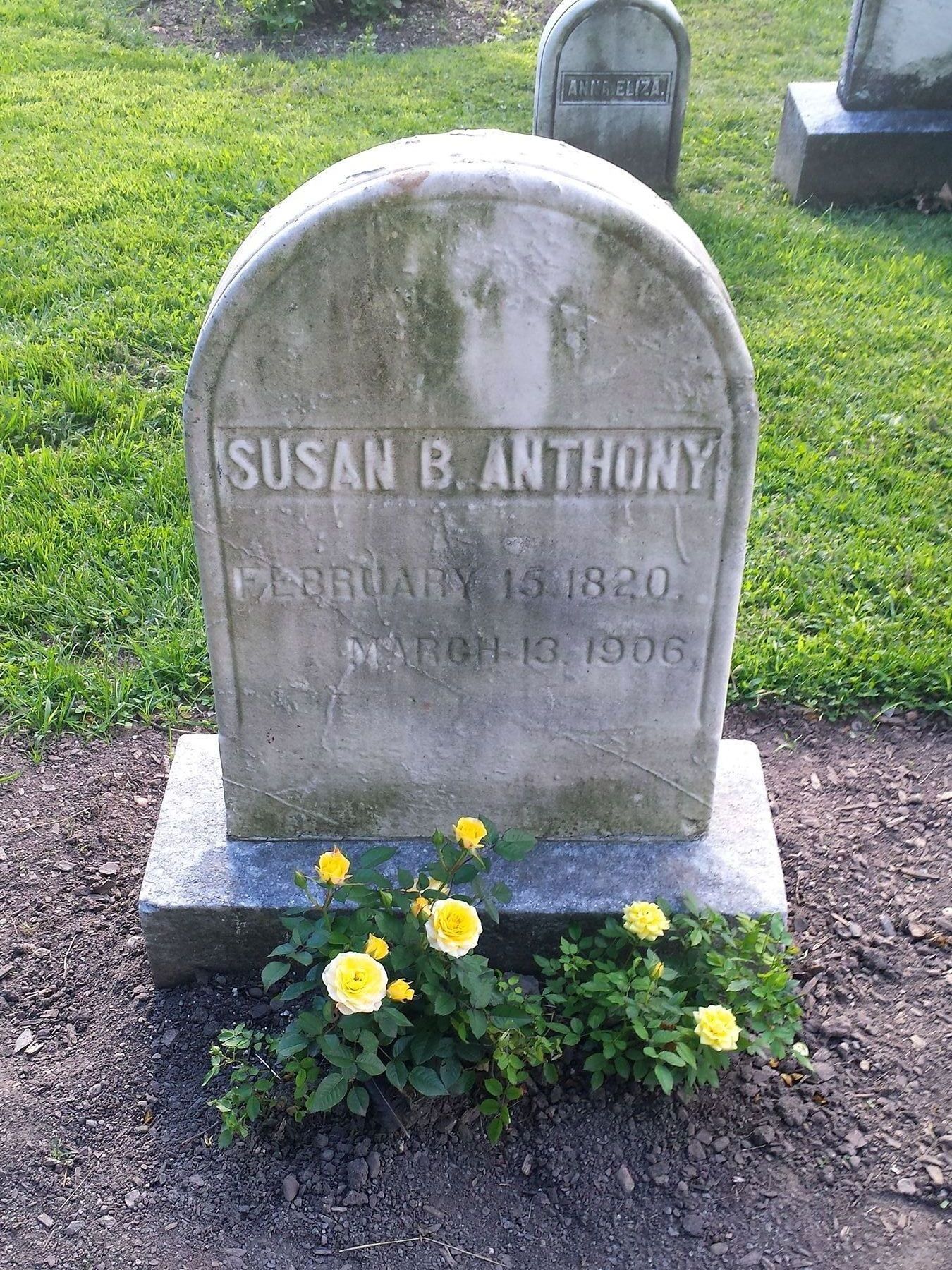Born in South Adams, Massachusetts, her father, a liberal Quaker, was a cotton manufacturer. She was home schooled until being enrolled in a boarding school in Philadelphia. At age 15, she began teaching, a career that would last for 15 years.
After the family moved to Rochester, New York, the Anthony family members were active in the anti-slavery movement. Quakers met at their farm every Sunday, sometimes joined by Frederick Douglass and William Lloyd Garrison.
Susan B. Anthony abandoned teaching and began participating in the movement for woman suffrage. She, along with fellow suffrage activist Elizabeth Cady Stanton, founded the American Equal Rights Association while publishing a newspaper "The Revolution" with the masthead, "Men their rights, and nothing more, women, their rights, and nothing less," and began outlining their agenda for reform in print.
Upon the resignation of Stanton as President of the National Woman Suffrage Association because of old age, Susan Anthony took up the mantle of leadership. She averaged 100 lectures a year and engaged in eight different state campaigns for a Constitutional Amendment enfranchising women, while attending hearings before suffrage committees of practically every Congress until retirement.
She suffered from a serious valvular heart problem in the latter years of her life. After attending a banquet in New York in honor of her 86th birthday, she had a serious attack of neuralgia. Returning home to Rochester, pneumonia developed, and then she lapsed into a coma, resulting in her death at the home she shared with her sister on Madison Avenue in Rochester. Her Unitarian funeral was attended by 10,000 mourners. Black activist Hester C. Jeffrey, sharing the platform with the minister of the Unitarian Church, the Mayor of Rochester, and the President of the University of Rochester, gave the eulogy for her deceased friend.
The Susan B. Anthony House was the home of the legendary American civil rights leader during the most politically active period of her life. It was the site of her famous arrest for voting and the place of her death. The home is located in a Rochester Historic District where a nine-block area of 19th-century middle-class houses and buildings are intact and preserved, with the Susan Anthony House and Susan Anthony Square the centerpiece. The residence contains the original furniture and thousands of artifacts, documents, photographs, and periodicals.
All American adult women finally got the vote with the Nineteenth Amendment, also known as the Susan B. Anthony Amendment, in 1920, 13 years after her death. New York set a state-wide holiday when it designated February 15th as the day to commemorate her life. In 1979, the United States Mint created the Susan B. Anthony Silver Dollar in 1979 with her face memorialized on the obverse. She was the joint author with Elizbeth Cady Stanton, Ida Husted Harper, and Matilda Joslyn Gage of "The History of Woman Suffrage." She was posthumously pardoned by President Donald J. Trump in 2020, on the 100-year anniversary of the 19th Amendment.
Born in South Adams, Massachusetts, her father, a liberal Quaker, was a cotton manufacturer. She was home schooled until being enrolled in a boarding school in Philadelphia. At age 15, she began teaching, a career that would last for 15 years.
After the family moved to Rochester, New York, the Anthony family members were active in the anti-slavery movement. Quakers met at their farm every Sunday, sometimes joined by Frederick Douglass and William Lloyd Garrison.
Susan B. Anthony abandoned teaching and began participating in the movement for woman suffrage. She, along with fellow suffrage activist Elizabeth Cady Stanton, founded the American Equal Rights Association while publishing a newspaper "The Revolution" with the masthead, "Men their rights, and nothing more, women, their rights, and nothing less," and began outlining their agenda for reform in print.
Upon the resignation of Stanton as President of the National Woman Suffrage Association because of old age, Susan Anthony took up the mantle of leadership. She averaged 100 lectures a year and engaged in eight different state campaigns for a Constitutional Amendment enfranchising women, while attending hearings before suffrage committees of practically every Congress until retirement.
She suffered from a serious valvular heart problem in the latter years of her life. After attending a banquet in New York in honor of her 86th birthday, she had a serious attack of neuralgia. Returning home to Rochester, pneumonia developed, and then she lapsed into a coma, resulting in her death at the home she shared with her sister on Madison Avenue in Rochester. Her Unitarian funeral was attended by 10,000 mourners. Black activist Hester C. Jeffrey, sharing the platform with the minister of the Unitarian Church, the Mayor of Rochester, and the President of the University of Rochester, gave the eulogy for her deceased friend.
The Susan B. Anthony House was the home of the legendary American civil rights leader during the most politically active period of her life. It was the site of her famous arrest for voting and the place of her death. The home is located in a Rochester Historic District where a nine-block area of 19th-century middle-class houses and buildings are intact and preserved, with the Susan Anthony House and Susan Anthony Square the centerpiece. The residence contains the original furniture and thousands of artifacts, documents, photographs, and periodicals.
All American adult women finally got the vote with the Nineteenth Amendment, also known as the Susan B. Anthony Amendment, in 1920, 13 years after her death. New York set a state-wide holiday when it designated February 15th as the day to commemorate her life. In 1979, the United States Mint created the Susan B. Anthony Silver Dollar in 1979 with her face memorialized on the obverse. She was the joint author with Elizbeth Cady Stanton, Ida Husted Harper, and Matilda Joslyn Gage of "The History of Woman Suffrage." She was posthumously pardoned by President Donald J. Trump in 2020, on the 100-year anniversary of the 19th Amendment.
Bio by: Donald Greyfield
Inscription
SUSAN B. ANTHONY
February 15, 1820.
March 13, 1906.
Family Members
Advertisement
See more Anthony memorials in:
Records on Ancestry
Sponsored by Ancestry
Advertisement












